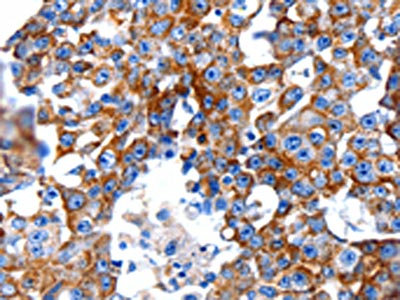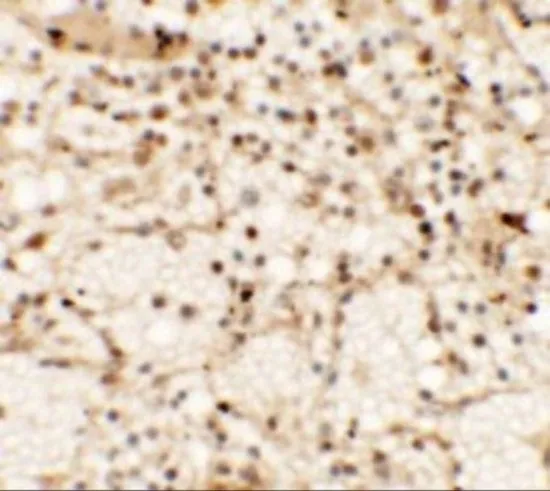
IHC-P analysis of human spleen tissue using GTX31853 Dectin-1 antibody. Working concentration : 5 microg/ml
Dectin-1 antibody
GTX31853
ApplicationsImmunoFluorescence, Western Blot, ELISA, ImmunoCytoChemistry, ImmunoHistoChemistry, ImmunoHistoChemistry Paraffin
Product group Antibodies
TargetCLEC7A
Overview
- SupplierGeneTex
- Product NameDectin-1 antibody
- Delivery Days Customer9
- Application Supplier NoteWB: 1 - 2 microg/mL. IHC-P: 5 microg/mL. *Optimal dilutions/concentrations should be determined by the researcher.Not tested in other applications.
- ApplicationsImmunoFluorescence, Western Blot, ELISA, ImmunoCytoChemistry, ImmunoHistoChemistry, ImmunoHistoChemistry Paraffin
- CertificationResearch Use Only
- ClonalityPolyclonal
- Concentration1 mg/ml
- ConjugateUnconjugated
- Gene ID64581
- Target nameCLEC7A
- Target descriptionC-type lectin domain containing 7A
- Target synonymsbeta-glucan receptor; BGR; CANDF4; CD369; CLECSF12; C-type (calcium dependent, carbohydrate-recognition domain) lectin, superfamily member 12; C-type lectin domain family 7 member A; C-type lectin superfamily member 12; DC-associated C-type lectin 1; DECTIN1; dectin-1; dendritic cell-associated C-type lectin-1; lectin-like receptor 1; SCARE2
- HostRabbit
- IsotypeIgG
- Protein IDQ9BXN2
- Protein NameC-type lectin domain family 7 member A
- Scientific DescriptionThis gene encodes a member of the C-type lectin/C-type lectin-like domain (CTL/CTLD) superfamily. The encoded glycoprotein is a small type II membrane receptor with an extracellular C-type lectin-like domain fold and a cytoplasmic domain with an immunoreceptor tyrosine-based activation motif. It functions as a pattern-recognition receptor that recognizes a variety of beta-1,3-linked and beta-1,6-linked glucans from fungi and plants, and in this way plays a role in innate immune response. Alternate transcriptional splice variants, encoding different isoforms, have been characterized. This gene is closely linked to other CTL/CTLD superfamily members on chromosome 12p13 in the natural killer gene complex region. [provided by RefSeq, Jul 2008]
- Storage Instruction-20°C or -80°C,2°C to 8°C
- UNSPSC12352203

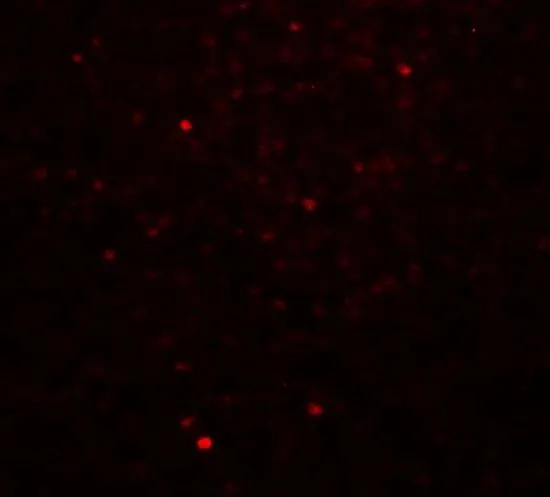
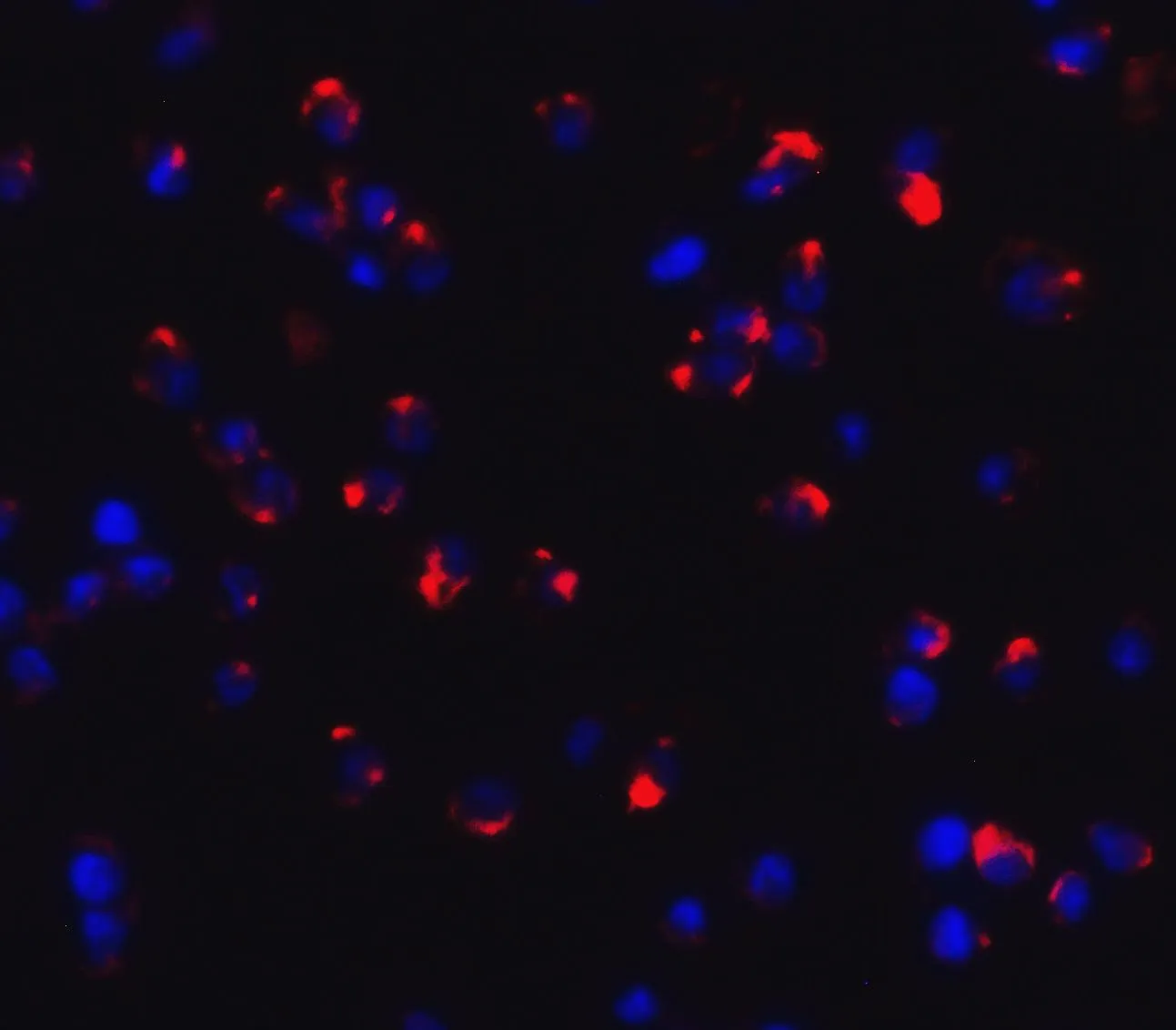
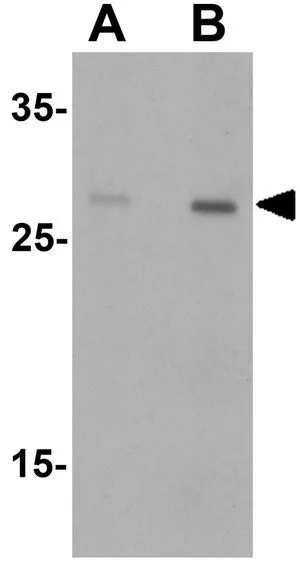



![FACS analysis of human peripheral blood monocytes using GTX42982 Dectin-1 antibody [GE2] (PE).](https://www.genetex.com/upload/website/prouct_img/normal/GTX42982/GTX42982_3542_FACS_w_23060820_567.webp)
![FACS analysis of human peripheral blood granulocytes using GTX42984 Dectin-1 antibody [BD6] (PE).](https://www.genetex.com/upload/website/prouct_img/normal/GTX42984/GTX42984_3509_FACS_w_23060820_673.webp)
![FACS analysis of human peripheral blood monocytes using GTX43450 Dectin-1 antibody [GE2] (FITC).](https://www.genetex.com/upload/website/prouct_img/normal/GTX43450/GTX43450_3529_FACS_w_23051500_492.webp)
![FACS analysis of human peripheral blood monocytes using GTX43451 Dectin-1 antibody [GE2] (FITC).](https://www.genetex.com/upload/website/prouct_img/normal/GTX43451/GTX43451_3533_FACS_w_23051500_523.webp)
